The Early Schools of Indian Buddhism Series
Buddhist schools at the time of the Fourth ‘Vasumitra’ ‘Kanishka’ Council at Jalandhar.
Part 9
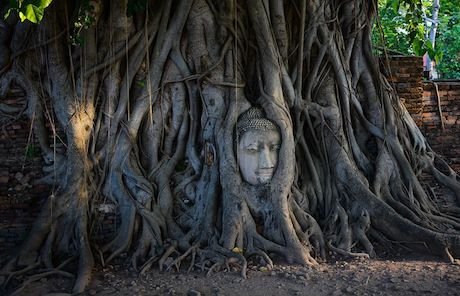
In Part 3 of this series, we looked at the Fourth (and Third) Council of Buddhism, and gave a general overview of who participated, what was discussed, where it was held, and why it was necessary to convene it in the first place.
The fourth Buddhist Council was held at Jalandhar in modern day Kashmir, it was also named the ‘King Kanishka’ Council, and was headed by Vasumitra around 100 AD. The fourth Buddhist Council is considered a sectarian council, meaning they are not acknowledged as valid by the schools that did not participate—so the Sarvastivada school held the fourth 'Kanishka' council. Five hundred Arhats, five hundred Bodhisattvas and five hundred Panditas (non-stream-enterers) took part in the Council. An attempt was made to reconcile the conflicting opinions of the different schools and settle the Vinaya, Sutra and Abhidharma texts.
The Magadha-Vajji war with Machiavellian proportions
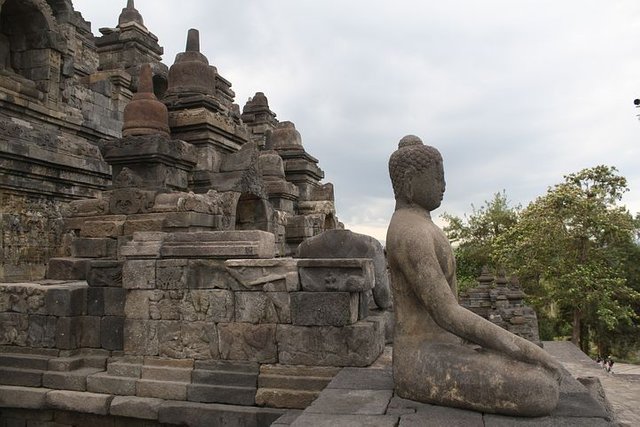
Before diving into the account of the Fourth Council, I want to mention an interesting event that happened about 500 years prior, during the reign of King Ajatasattu (493-462 BC) in the Magadha region. King Ajatasattu reign was during the Haryanka dynasty (535-413 BC).
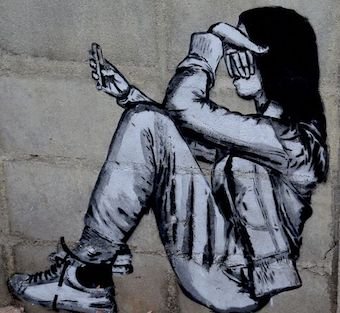
The event happened in the Vajji country, which was one of the sixteen regions of India at the time. The Licchavi was one of the chiefs and powerful clans in this region and were part of the warrior caste (khattiya). Vesali, where the Second Council was held, was the capital city of the Licchavi people. In the time of the Buddha, Vesali was a republic, and the Vajjian people were a very prosperous and happy community. The Buddha attributed this to the fact that they practiced the seven conditions of welfare (satta aparihaniya dhamma) taught to them by himself.
After the Buddha's death, King Ajatasattu, of the neighboring Magadha region, with the help of his minister Vassakara, wanted to conquer the Vajjian region. Vassakara visited the Buddha to find out, whether, in the Buddha’s view, there was a chance for king Ajatasattu conquering the Vajjian people in battle. The Buddha said that as long as the Vajjian people practiced the seven conditions of prosperity which he had taught to them, they would prosper rather than decline. Having heard this, Vassakara came up with an alternate plan to bring about the downfall of the Vajjian people through diplomacy (upalapana) or disorganization (mithubheda).
Vassakara went back to King Ajatasattu and conspired with the king, to make it look like Vassakara was being expelled by the king, on the charge of showing favor to the Vajjian region during discussions in the assembly with the Buddha. After this, as part of their Machiavellian plan, Vassakara went to the Vajjian country, and the Licchavis, all unsuspecting, welcomed him and appointed him as the teacher of their children. Using misinforming and questioning the children of the Vajjian people in secret, he created an environment of disunity by questioning the Vajjian principles, and this discord soon spread to the elders. In three years, the Licchavis were utterly disorganized, and when the assembly drum was beaten, they failed to appear. Vassakara then sent a message to King Ajatasattu, who was able to capture the city of Vesali easily with very little to no resistance.
Section 1 — The schools that ‘participated’ in the Fourth Council according to Vasumitra
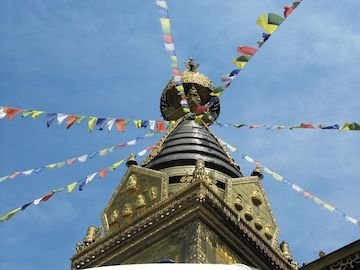
The only school that participated in the Fourth Council are the Sarvastivada. The other schools that are mentioned are only referred to in the Samaya-bhedoparacanacakra for their differing points of view.
In part 8 of this series, we covered the following eleven schools that existed at the time of the Third Council according to the Sarvastivada account of Vasumitra: 1. Mahasamghika (Mahasanghikas), 2. Ekavyavaharika (Ekabboharikas), 3. Lokottaravada, 4. Kaukkutika (Gokulikas), 5. Bahusrutiya (Bahulikas), 6. Prajnaptivada (Pannattivadins), 7. Caityasaila (Cetiyavadins), 8. Aparasaila (Aparaseliyas), 9. Uttarasaila [ = Purvasaila] (Pubbaseliyas), 10. Sarvastivada (Sabbatthivadins), 11. Kasyapiya (Kassapikas) [also known as Suvarsaka].
This school is also called the mula-Sthaviravada (root-elder school), and as such could be considered to be existing before even the Third Council.
Vasumitra considers the Hemavatikas a sub-sect from the Sthavira school that branched off around 275 BC. This is very different from the Theravada tradition, which identifies the Hemavatikas as a non-branching school that originated around 120 BC. In the Theravada tradition, according to the Mahavamsa, this school was situated in the Jamudipa region, and they were so called because they lived on Mount Himavata (in the Himalayas).
Epigraphical proof of this school:
- Hemavata (Luders, 156): Crystal box from Stupa 2 at Sonari, from the Sunga period (2nd century BC).
- Hemavata (Luders, 158): Soapstone box from Stupa 2 at Sonari, from the Sunga period (2nd century BC).
- Hemavata (Luders, 655): Soapstone box from Stupa 2 at Sanci, from the Sunga period (2nd century BC).
Vasumitra considers the Vatsiputriya a sub-sect from the Sarvastivada school. This is very different from the Theravada tradition, which identifies the Vatsiputrya as the earliest branching school around 375 BC.
Epigraphical proof of this school:
Vatsiputrika (Luders, 923): Buddhist pillar at Sarnath (Varanasi, from the Gupta period (4th century AD).
Vasumitra considers the Dhammuttariyas to be a sub-sect from the Vatsiputriya school, as mentioned in 1.2.2. The Theravada tradition agrees as to the root-school, but the timing of the branching in the Theravada account (200 BC) differs somewhat from the Vasumitra account (240 BC). According to the Theravada tradition, as stated in the Mahavamsa, this school got their name from their teacher, Dhammattara.
Epigraphical proof of this school:
Dhamutariya (Luders, 1094-5): Gift, to the caitya at Karli, of two pillars, by the thera Satimita belonging to the Dharmottariya school in Surparaka, undated.Dhammutariya (Luders, 1152): Cave at Junnar, undated.
Vasumitra considers the Bhadrayaniya to be a sub-sect from the Vatsiputriya school, as mentioned in 1.2.2. The Theravada tradition agrees and has the same root-school and the timing of the branching.
The epigraphical proof for this school was included in part 8 of this series.
Vasumitra considers the Sammatiya to be a sub-sect from the Vatsiputriya school, as mentioned in 1.2.2. The Theravada tradition agrees as to the same root-school but has the timing of the branching (300 BC) differing from the Vasumitra account (225 BC).
The epigraphical proof for this school was included in part 8 of this series.
Vasumitra considers the Channagirika to be a sub-sect from the Vatsiputriya school, as mentioned in 1.2.2. The Theravada tradition agrees as to the same root-school but has the timing of the branching (275 BC) differing from the Vasumitra account (200 BC).
There is no epigraphical proof for this school.
Vasumitra considers the Mahisasaka to be a sub-sect from the Sarvastivada school. The Theravada tradition disagrees and has the Mahisasaka as the root-school for the Sarvastivada. The timing of the branching (350 BC) in the Theravada account differs considerably from the Vasumitra account (225 BC). It is possible to explain this difference, as Vasumitra differentiates in his text, between the ‘early Mahisasaka’ and ‘late Mahisasaka.’ The ‘early Mahisasaka’ that Vasumitra refers to probably matches the Mahisasaka from the Theravada account.
The epigraphical proof for this school was included in part 8 of this series.
Vasumitra considers the Dharmaguptika to be a sub-sect from the Mahisasaka school, as mentioned in 1.2.7. The Theravada tradition agrees as to the same root-school but has the timing of the branching (350 BC) differing from the Vasumitra account (210 BC). The timing difference might be related to the difference between ‘early Mahisasaka’ and ‘late Mahisasaka,’ as discussed in 1.2.7. This school had their own Vinaya text, and they were called after their teacher, Dharmagupta.
There is no epigraphical proof for this school.
Vasumitra considers the Kassapikas to be a sub-sect from the Sarvastivada school. The Theravada tradition agrees as to the same root-school but has the timing of the branching (250 BC) differing from the Vasumitra account (200 BC).
The epigraphical proof for this school was included in part 8 of this series.
Vasumitra considers the Sankantikas to be a sub-sect from the Sarvastivada school. The Theravada tradition disagrees and has the Kassapikas as the root-school. The timing of the branching in the Theravada account (200 BC) differs somewhat from the Vasumitra account (130 BC).
Epigraphical proof of this school:
- Sutamtika (Luders, 797): Pillar at Bharhut, from the Sunga period (2nd century BC).
- Sutatika (Luders, 635): Sanci, from the Sunga period.
- Sutatikini (Luders, 352, 319): Sanci, Sunga period.
Section 2 — Schools that existed at the time of the Fourth Council according to the Kathavatthu
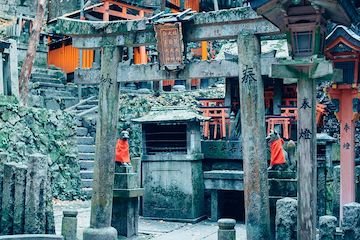
In part 8 of this series, we covered the following eleven schools that existed at the time of the Third Council according to the Theravada account in the Kathavatthu: 1. Sthaviravada (Theravada), 2. Vatsiputriya (Vajjiputtakas), 3. Mahasamghika (Mahasanghikas), 4. Kaukkutika (Gokulikas), 5. Sammatiya (Sammitiyas), 6. Bhadrayaniya (Bhadrayanikas), 7. Mahisasaka (Mahimsasakas), 8. Sarvastivada (Sabbatthivadins), 9. Ekavyavaharika (Ekabboharikas), 10. Channagirika (Channagarikas), 11. Dharmaguptika (Dhammaguttikas).
The Kathavatthu considers the Pannattivadins to be a sub-sect from the Kaukkutika (Gokulikas) school. The Sarvastivada tradition disagrees and has the Mahasamghika as the root-school. The timing of the branching in the Sarvastivada account (300 BC) differs considerably from the Kathavatthu account (130 BC).
There is no epigraphical proof for this school.
The Kathavatthu considers the Bahulikas to be a sub-sect from the Kaukkutika (Gokulikas) school. The Sarvastivada tradition disagrees and has the Mahasamghika as the root-school. The timing of the branching in the Sarvastivada account (325 BC) differs considerably from the Kathavatthu account (175 BC).
The epigraphical proof for this school was included in part 8 of this series.
The Kathavatthu considers the Cetiyavadins to be a sub-sect from the Bahulika (Bahusrutiya) school, as mentioned in 2.2.2. The Sarvastivada tradition disagrees and has the Mahasamghika as the root-school. The timing of the branching in the Sarvastivada account (300 BC) differs considerably from the Kathavatthu account (100 BC).
The epigraphical proof for this school was included in part 8 of this series.
The Kathavatthu considers the Suttavadins to be a sub-sect from the Sankantikas (Sautrantika) school, as mentioned in 2.2.2. The Sarvastivada tradition of Vasumitra has no record of this school at all. The timing of the branching in the Kathavatthu account is around 100 BC.
There is no epigraphical proof for this school, other than that for their Sautrantika root-school, see 2.2.6, with a very similar name.
The Kathavatthu considers the Hetuvadins to be a non-branching school that originated around 120 BC. The Sarvastivada tradition of Vasumitra has a very different record for this school and shows it as being equal to the Sarvastivada school, branching off from the Sthaviravada around 275 BC.
There is no epigraphical proof for this school under the name of Hetuvadins.
The Kathavatthu considers the Vajiriyas to be a non-branching school that originated around 100 BC. The Sarvastivada tradition of Vasumitra has no record of this school at all.
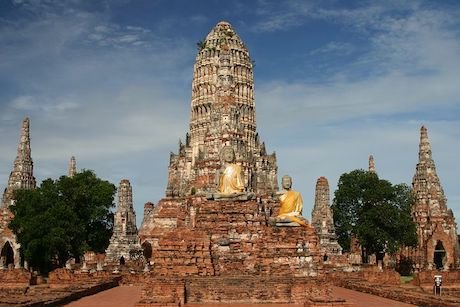
The Dipavamsa calls this school Apararajagarika, which might indicate this school’s name being very similar to the Rajagirikas and Aparaseliyas schools that are mentioned in the Kathavatthu as part of the Andhaka schools that originated around 275 AD.
In the next article, the Buddhist schools in the 5th Century A.D. according to the Chinese pilgrim Fa-hsien will be discussed.

- Introduction to the history of Buddhist Councils and Schools-Part 1
- The Buddhist Councils — Who, when, where, and why?Part 2
- The Buddhist Councils — Who, when, where, and why?Part 3
- The History Of ‘Northern Buddhists’ of Sarvastivada - Part 4
- The History Of ‘Northern Buddhists’ of Sarvastivada - Part 5
- Buddhist schools at the time of the First ‘Maha-Kasyapa’ Council at Rajagaha. - Part 6
- Buddhist schools at the time of the Second Council at Vaisali (and the subsequent Mahasamghika Council). - Part 7
- Buddhist schools at the time of the Third ‘Moggaliputta Tissa’ ‘Asoka’ Council - Part 8
- The Ten Stages of the Mahayana Bodhisattva Path-The Two Preliminary Stages-Part 1
- The Ten Stages of the Mahayana Bodhisattva Path-The Two Preliminary Stages-Part 2
- The Ten Stages of the Mahayana Bodhisattva Path-The Two Preliminary Stages-Part 3
- The Ten Stages of the Mahayana Bodhisattva Path-The Two Preliminary Stages-Part 4
- The Ten Stages of the Mahayana Bodhisattva Path-The Two Preliminary Stages-Part 5
- The Ten Stages of the Mahayana Bodhisattva Path-The Two Preliminary Stages-Part 6
- The Ten Stages of the Mahayana Bodhisattva Path-The Two Preliminary Stages-Part 7
- The Ten Stages of the Mahayana Bodhisattva Path-The Two Preliminary Stages-Part 8
- The Ten Stages of the Mahayana Bodhisattva Path-The Two Preliminary Stages-Part 9
- The Ten Stages of the Mahayana Bodhisattva Path-The Two Preliminary Stages-Part 10
- The Ten Stages of the Mahayana Bodhisattva Path-The Two Preliminary Stages-Part 11
- The Deathless In Buddhism
- The "Timeless" Teaching-Being Beyond Temporality
- The Nine Successive Cessations In buddhist Meditations - Part 1
- The Nine Successive Cessations In buddhist Meditations - Part 2
- The Nine Successive Cessations In buddhist Meditations - Part 3
- The Twelve Links Of Dependent Origination
- THINGS to DEVELOP and THINGS to AVOID
- The First Noble Truth
- The Second Noble Truth
- The Third Noble Truth
- The Fourth Noble Truth
- 10 Fold Path Series
- EATING MEAT — WHY THE BUDDHA WAS NOT A VEGETARIAN
I will flag comment spam at 1% strength. If you keep on spamming my post, I will flag you at 100%. I don't care if you have limited English abilities, write a couple of sentences about this article, no copy-paste, please. I will flag: one sentence comments, links to your blog and begging for up-votes and follows. Also, I will flag comments that have nothing to do with my blog's article. I will also check your comment section to see if you have been comment spamming on other blogs.
@amigoponc, I am so sorry I didn't thank you when you posted your wonderful comment! I am honored you feel you find our project worthy of creating a book. Thank you so much and I hope everyone enjoys our work as much as we enjoyed our research
It is a enough or very extensive story, I would say. But you have been able to distribute it, I have been sharing little by little. I hope you find yourself well and your weight loss is great. Goodnight
The introduction story could be our world today! This is my favorite story on how a community, state, or nation can be corrupted easily and conquered without any war.
My weight loss plan is working very well @denissemata. I hope yours is going well, I've been baking bread and desserts for visiting family, and I haven't been tempted too much. Of course, the cook has to taste the food but only a taste, not a full meals worth.
I've learned a couple of new things about weight and inflammation I will be writing about in the future.
Right now I am establishing new eating, exercise, and meditation routines. I will be back on Steemit full time in a couple more weeks. My energy levels are almost back to normal!
My weight loss plan was ruined a little, I traveled and it went out of control a lot and also next week it's my birthday and I was very stressed by my final exams. But I will try to eat healthier again. You miss a lot in steemit about all your wonderful drawings
While I am healing and finding balance I am not painting or drawing. I've dropped most of my work on Steemit, and I am focusing on family and health.
I have had to develop a new routine for my diet and exercise that combats my sedentary lifestyle of researching, writing, and painting for hours a day.
Once my new eating and exercise habits are firmly established, I will be able to sit for hours painting and writing without harming my health.
Losing weight for me is about changing my reaction to stress. I overeat because I am stressed and I am aware of my weaknesses and can let go of my reactions.
I go to sleep and get up at the same time every day.
I walk and do my yoga at the same time every day.
I study at the same time every day.
If I mess up on my plan, I don't give up.
I bring my food to eat rather than eat the food I am cooking for other people.
@reddust, Absolutely well description as you mentioned another part of Indian Buddhism series. Sri Lanka and India Buddhism teaching have some equality. Why I said it? Those historical story of Buddha's period nicely taught from our Buddhism teacher and already entered contexts our Buddhism school printed books of government. King Ajatasattu was sometime worst king and I've heard his bad story. Absolutely you reminded me again my past buddhism lessons. Triple gem bless you.
Thank you, my dear friend, @madushanka, I've learned so much from writing this series with my Husband. I had no idea how ancient and complicated Buddhist schools, and arguments between the Buddhist schools were.
The little story about the corruption of a state by bad teachers could be today's news!
The interesting event that you have made reference to, is a reminder to all of us about taking care of our close relationships. We should never allow our enemies, neither through gossip nor other Machiavellian tactics to separate us from our close friends and family. "Divide and Conquer" can be used against us.
@marcusantoniu26, the story of "Divide and Conquer," has been my favorite so far, and we can see this tactic played out throughout the world right now from the personal level to our state and national level. There is a lot of profit to be made in the creation of suffering.
@reddust, I think we have similar minds. I was discussing this same topic of "Divide and Conquer" with a friend of mine. What I say...Know your enemy, the one who wants to control you.
hopefully my friend @reddust more beautiful and healthy, in the school Sufi or commonly called suluk taught many ways to purify the soul of all diseases of revenge, anger, love to the world and a sense of affection to fellow human beings, so in meditation (tawajjuh) the Sufi read "dhikr" to achieve the above goals,
Thank you @steemitnatural, I am sorry for the late comment. I have been away from the net and couldn't check my comments. Buddhism has many ways to let go of negative conditioning, that is what you call sin I think. Although Buddhism does not believe in an eternal unchanging self-called soul. I
n the Christian religion I remember my bible study lessons as a child, sin is missing the "right" mark (hamartia), what is right, God being the highest aim.
Buddhism we let go of harmful habits and establish positive habits which help the student see reality as it is breaking free of karma and rebirth into negativity.
in Sufi schools especially in Aceh called dayah. although dayah now very different from dayah ancient that specialize to lesson "tharikat" .. i am happy you @reddust healthy always, blessing for us all
Thank you @steemitcountry, without my health I can't do all the things easily. That's why meditating and practicing the virtues to establish positive mind states is so important. Eventually, when I do get sick and die from old age I will have established positive habits and I won't have to worry about dying with a negative mind state, which leads to more suffering in the next life. In Buddhism the personality I call me does not take rebirth. Blessing to you and your family and also your young papaya trees.
thank you very much for your prayer my friend, may you also get hidayah Allah ,,
From your post we can know always great knowledge about Buddhism history.. and I really like your every explanation about Buddhism I think you and your husband really done a good work with your honesty..
Thank you @abontikazaman, I am learning about Buddhism's ancient past as I write, so we both are learning together.
Good article on buddhism ..Huge information in it . Jalandhar is my home city , if you calling about punjab state jalandhar city
I think the Punjab State is Jalandhar City @spiritualpower, however, I do not know India Geography well enough to confirm or deny.
I am sensing that Buddhism has a rich history. Like a tree it has a lot of different branches and intricacies that makes it blossom. Hope you are well. @reddust
That is how I see Buddhism too @enjoywithtroy. It has grown into a beautiful tree and still is strong. I am doing well and will be back on Steemit full time the beginning of August.
Very interesting story sir, though I'm don't support Buddhism, cuz I'm Muslim, but I still respect every religion! and respecting any religion is a good thing in my point of view @reddust
@abdulmanan, I respect everyone's views and work on "live and let live" as long as they don't hurt anyone practicing their belief system. Thank you for visiting my blog.